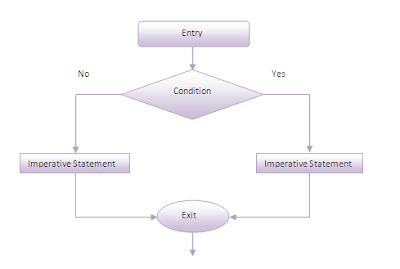 |
| COBOL Multiply Statement |
In COBOL programming, the Multiply Statement holds significant importance, offering a powerful capability to perform arithmetic operations efficiently. This article dives into the intricacies of the COBOL Multiply Statement, exploring its syntax, functionality, examples, advantages, common errors, and best practices. This article talks about the following key points about COBOL Multiply Statement:
Agenda.
- Introduction to COBOL Multiply Statement.
- Syntax of COBOL Multiply Statement.
- Explanation of COBOL Multiply Statement.
- Multiplying Two Numbers.
- Multiplying by a Constant.
- Multiplying by a Variable.
- Examples of COBOL Multiply Statement.
- Advantages of Using COBOL Multiply Statement.
- Common Errors and Troubleshooting.
- Best Practices for Using COBOL Multiply Statement.
- Conclusion.
Introduction to COBOL Multiply Statement
COBOL, for Common Business-Oriented Language, is renowned for its robustness in processing business data. The Multiply Statement in COBOL is a fundamental element for performing multiplication operations within programs. It allows programmers to multiply numeric data items, whether constants, variables, or expressions, providing flexibility in computation.
Syntax of COBOL Multiply Statement.
The MULTIPLY statement multiplies numeric items and sets the values of data items equal to the results. Multiply arithmetic statements have two different formats.
MULTIPLY operand-1 BY operand-2 GIVING result.
Here, operand-1 and operand-2 represent the values to be multiplied, and the result denotes the variable to store the outcome of the multiplication.
Here is a quick glimpse of the syntax:
Format 1: Multiply Statement Syntax.
 |
| COBOL Multiply Verb. |
Here, the value of identifier-1 or literal-1 is multiplied by the value of identifier-2; the product is then placed in identifier-2. For each successive occurrence of identifier-2, the multiplication occurs in the left-to-right order in which identifier-2 is specified.
Format 2: Multiply Statement Syntax.
 |
| COBOL Multiply Verb Syntax. |
Here, the value of identifier-1 or literal-1 is multiplied by the value of identifier-2 or literal-2. The product is then stored in the data item(s) referenced by identifier-3.
Explanation of COBOL Multiply Statement.
Multiplying Two Numbers.
The primary usage of the COBOL Multiply Statement involves multiplying two numeric values together. This is achieved by specifying the operands to be multiplied using the BY keyword.Multiplying by a Constant.
In some scenarios, it's necessary to multiply a numeric variable by a constant value. COBOL facilitates this by using constants directly within the Multiply Statement.Multiplying by a Variable.
Another common scenario is multiplying a variable by another variable. COBOL enables this operation by specifying the variables as operands in the Multiply Statement. |
| COBOL Multiply Example |
Advantages of Using COBOL Multiply Statement.
The COBOL Multiply Statement offers several advantages, including:- Efficient computation of multiplication operations.
- Simplified syntax for performing multiplication.
- Flexibility in handling various data types.
Common Errors and Troubleshooting.
While using the COBOL Multiply Statement, programmers may encounter errors such as:- Data type mismatch between operands.
- Overflow or underflow issues during computation.
- Incorrect usage of the GIVING clause.
Best Practices for Using COBOL Multiply Statement.
To ensure optimal utilization of the COBOL Multiply Statement, programmers should adhere to best practices such as:- Proper data validation to prevent unexpected results.
- Clear and descriptive naming conventions for operands and result variables.
- Regular code reviews to identify and rectify potential issues.
Conclusion.
In conclusion, the COBOL Multiply Statement is a vital component of COBOL programming, offering a convenient way to perform multiplication operations. Programmers can leverage this statement effectively in their COBOL programs by understanding its syntax, functionality, examples, advantages, common errors, and best practices.FAQs (Frequently Asked Questions).
What is the purpose of the COBOL Multiply Statement?
The COBOL Multiply Statement performs multiplication operations within COBOL programs, allowing efficient computation of numeric values.Can the COBOL Multiply Statement handle the multiplication of variables?
Yes, the COBOL Multiply Statement can multiply variables together, providing flexibility in arithmetic operations.What are some common errors encountered while using the COBOL Multiply Statement?
Common errors include data type mismatch, overflow/underflow issues, and incorrect usage of the GIVING clause.Are there any best practices for using the COBOL Multiply Statement?
Yes, best practices include proper data validation, clear naming conventions, and regular code reviews to ensure optimal usage.How does the COBOL Multiply Statement contribute to efficient computation?
The COBOL Multiply Statement simplifies the process of performing multiplication operations, enhancing the efficiency of COBOL programs.►Subscribe to Topictrick, & Don't forget to press THE BELL ICON to never miss any updates. Also, Please visit the link below to stay connected with Topictrick and the Mainframe forum on -
► Youtube
► Facebook
► Linkedin
► Reddit
Thank you for your support.
Mainframe Forum™











